Marc Chagall (1887-1985) Two Candlesticks. Gold Plated Brass
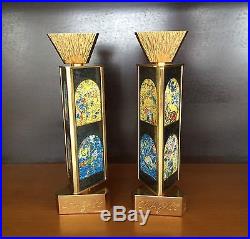

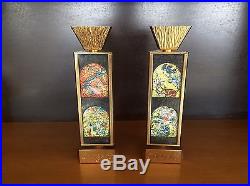

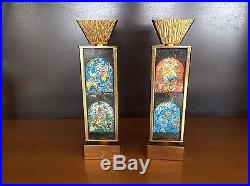
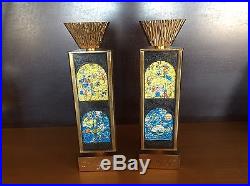
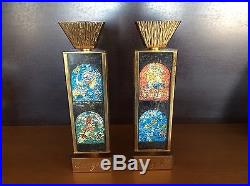
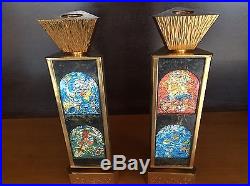
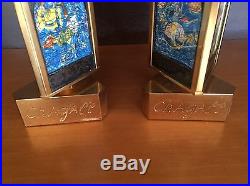

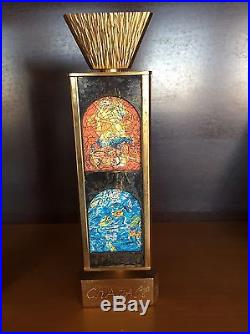
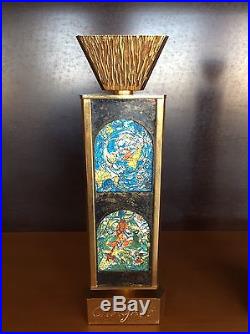

Featuring the famous set of 12 windows (each one signifying one of the tribes of Israel) installed at the Hadassah Medical School Synagogue in Ein Kerem, Jerusalem. Height: 25.5 cm / 10 inch. Please refer to photos for condition. Marc Chagall (1887 - 1985).
Chagall began to display his artistic talent while studying at a secular Russian school, and despite his fathers disapproval, in 1907 he began studying art with Leon Bakst in St. It was at this time that his distinct style that we recognize today began to emerge. As his paintings began to center on images from his childhood, the focus that would guide his artistic motivation for the rest of his life came to fruition. In 1910, Chagall, moved to Paris for four years.It was during this period that he painted some of his most famous paintings of the Jewish village, and developed the features that became recognizable trademarks of his art. Strong and bright colors began to portray the world in a dreamlike state.
Fantasy, nostalgia, and religion began to fuse together to create otherworldly images. In 1914, before the outbreak of World War I, Chagall held a one-man show in Berlin, exhibiting work dominated by Jewish images. During the war, he resided in Russia, and in 1917, endorsing the revolution, he was appointed Commissar for Fine Arts in Vitebsk and then director of the newly established Free Academy of Art. In 1922, Chagall left Russia, settling in France one year later. He lived there permanently except for the years 1941 - 1948 when, fleeing France during World War II, he resided in the United States. Chagall's horror over the Nazi rise to power is expressed in works depicting Jewish martyrs and refugees. In addition to images of the Jewish world, Chagall's paintings are inspired by themes from the Bible. His fascination with the Bible culminated in a series of over 100 etchings illustrating the Bible, many of which incorporate elements from folklore and from religious life in Russia. Israel, which Chagall first visited in 1931 for the opening of the Tel Aviv Art Museum, is likewise endowed with some of Chagall's work, most notably the twelve stained glass windows at Hadassah Hospital and wall decorations at the Knesset. Chagall received many prizes and much recognition for his work. He was also one of very few artists to exhibit work at the Louvre in their lifetime.The item "Marc Chagall (1887-1985) Two Candlesticks. Gold Plated Brass" is in sale since Saturday, April 22, 2017. This item is in the category "Collectibles\Decorative Collectibles\Candles, Holders". The seller is "talgev0" and is located in New York, New York. This item can be shipped to United States.
